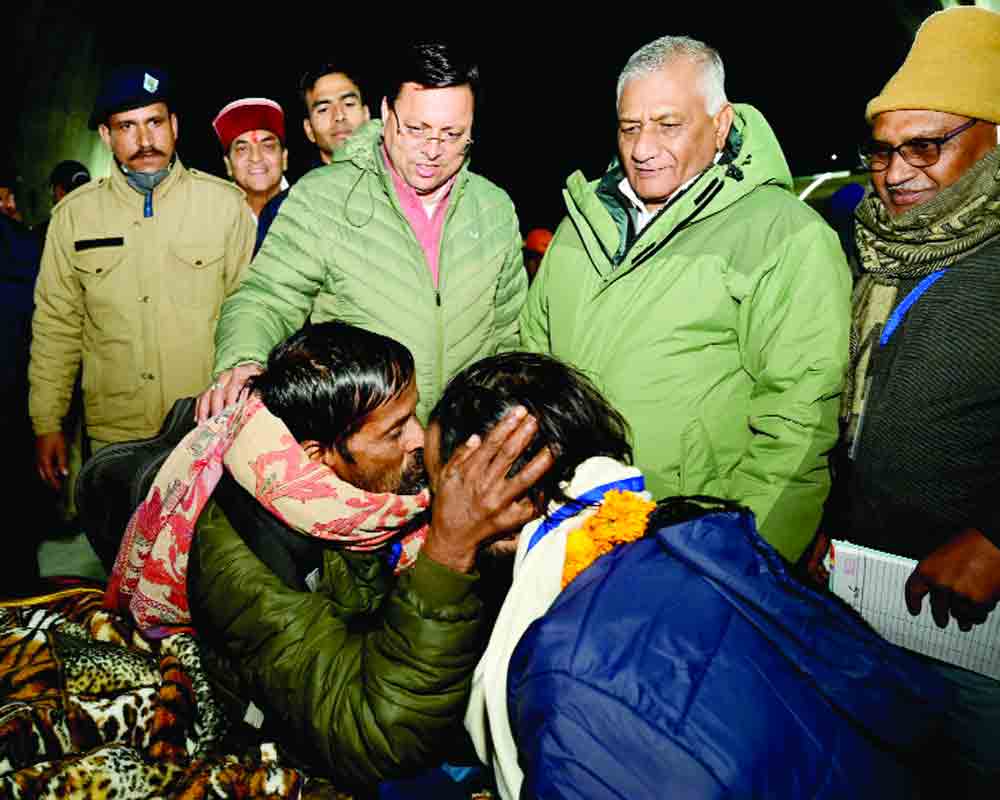The evacuation of 41 workers tells us a few things about what went right and what we must set right
Life be frail and ephemeral but it is the human grit, determination, resilience and collaborative spirit that makes it explore space, navigate seas, move earth, climb mountains and challenge the mighty Nature. On the same theme, the Silkyara tunnel rescue operation in Uttarkashi stands out as a shining example of effective crisis management. After 400 hours of intense effort, the trapped workers can see the sun again. It was arguably the nation's biggest rescue operation – international experts, local authorities, Army and big machines all worked in tandem to pull off this feat. And the rat miners, part of the Army operations, deserve a special mention as finally they managed to reach the miners after digging continuously for 24 hours. Rat mining is now banned in India, yet their skills did the trick. Celebrations apart, this is also the time to ponder over the lessons learned from the oversights and mistakes made during the mission. For 17 days, the Silkyara-Barkot tunnel became a site of frenzy after 41 workers were trapped in the tunnel. The rugged terrain and inclement weather compounded the challenges; the remote location added a degree of difficulty to the mission, necessitating a swift and coordinated response.
While the rescue operation ultimately succeeded, it is important to examine our shortcomings to improve future crisis responses. One notable oversight was the initial delay in deploying specialised equipment to the site. This lapse, attributed to logistical challenges and communication gaps, underscored the importance of a rapid and efficient response in emergencies. Another lesson learned was the need for enhanced coordination among the agencies involved in the rescue. Effective communication channels and seamless collaboration are essential for streamlining efforts and ensuring a cohesive response. It would have been better had the Army been called in earlier, given its expertise in such operations. Initially, delays and confusion arose due to inadequate coordination, highlighting the need for improved inter-agency cooperation which was, however, made good after it became a national top story. While the operation showcased the prowess of specialised units in handling complex crises, it also emphasised the importance of addressing logistical challenges and improving coordination among agencies. It also highlighted how protocols and standard working procedures are flouted by the companies involved. There must be a Government agency to ensure that safety procedures are followed. The life of every individual matters but the companies often cut corners when it comes to worker safety. Even the multinational companies operating in India do not follow the same safety protocols they follow in Europe and America, as was amply proved by the Bhopal gas disaster. They know safety at the workplace is not a priority. In Silkyara, there was no plan in place to evacuate workers in case of an emergency. By continuously refining our emergency response strategies, we can better prepare for challenges.


























